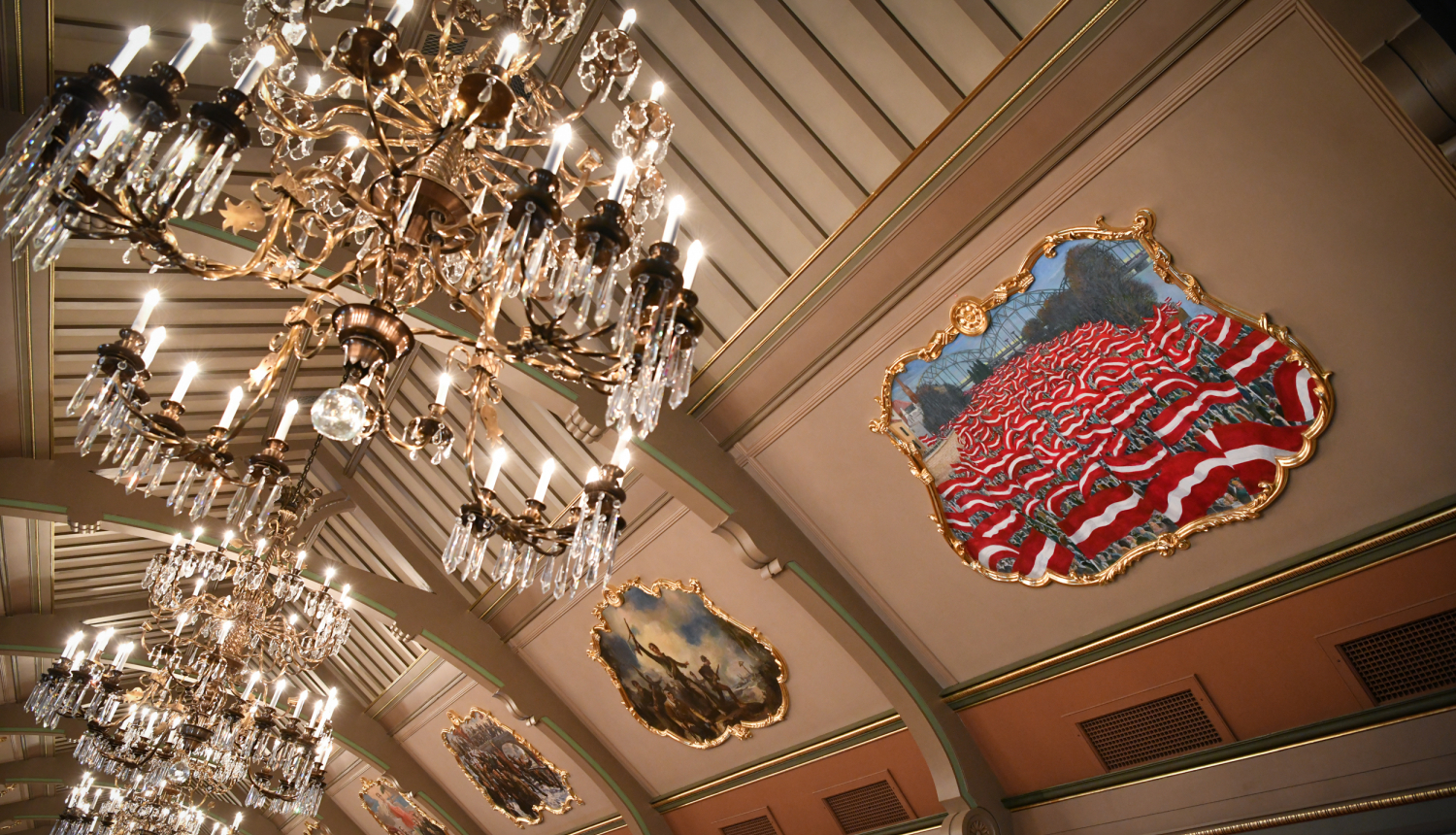On 17 September, Chancery of the President of Latvia (Presidential Chancery) revealed the presidential portrait gallery and most recent additions to the collection of murals (Aleksejs Naumovs’ National rally at the Daugava riverfront and Andris Eglītis’ Founding of the Republic of Latvia on 18 November 1918) gracing the ceiling of Riga Castle’s Festival Hall to art experts and media.
‘Riga Castle is astonishingly beautiful building, architectural heritage that dates more than five centuries back. Any modifications, additional design elements must be considered very carefully. There is no other hall like Festival Hall of the Riga Castle in Latvia. It is the heart of the Riga Castle that brings our history alive. These few ceiling murals, here in the Festival Hall, each carry an enormous symbolic power, and it was not easy for the Riga Castle Restoration Council to make the decision to add two new ‘chapters’, ‘National rally at the Daugava riverfront’ and ‘Founding of the Republic of Latvia on 18 November 1918’, to the collection in 2017. It was equally challenging to decide about the artists who would be commissioned to do this gracious task and create ceiling murals for Riga Castle Festival Hall and paint the portrait of the President of Latvia Raimonds Vējonis (2015–2019),’ Andris Teikmanis, Head of the Presidential Chancery, said to participants attending the event.
‘When Eižens Laube created the Festival Hall in 1938 and decided to create murals that showed history of Latvia and our folk wisdom, no one really thought about the pressure that would create for future ‘tenants’ of the building,’ Māra Lāce, Director of the National Art Museum of Latvia, who provided her expert opinion to artists when paintings were created, said. She also stressed that Latvia is about to run out of portraitists and this tradition will have to be rethought. ‘These ceiling murals and portraits of presidents are commissioned by the state, and mindset, approach and techniques play an important role, and we should ask ourselves – how many artists are willing to accept the challenge?’ Director Lāce added.
Artist Andris Eglītis shared his story of how the mural was painted: ‘I want to thank the Presidential Chancery and expert committee for commissioning me to paint the ‘Founding of the Republic of Latvia on 18 November 1918’. I tried my best to keep the authentic symbolism and add a contemporary touch. I even had to create a special blueprint for the painting, a stage design with models at the National Theatre. I read exciting testimonies about the historic moment. Despite all the war and chaos, there was enormous will to live, a huge enthusiasm. That was the feeling I tried to convey through my painting.’
Artist Aleksejs Naumovs, who joined the ceremony remotely from Paris where he is launching his own exhibition, shared his thoughts about the commission in writing: ‘I am deeply humbled and touched to have been chosen to paint the ‘National rally at the Daugava riverfront’ mural on the ceiling of the Riga Castle Festival Hall. This painting combines my personal memories of the time and those events, historical studies and conversations with those who took part in the rally. It is a glorious return to monumental art that I have always dreamt about. I used compositional techniques, paint and movement to show the power of people marching towards their freedom, together. It is a joyous moment, solemn and full of hope: flags waving, people feeling proud and determined. I went back in time to that place. A place where everyone was friends, colleagues. Oh, the camaraderie! Greetings to my fellow artists. I feel very proud of what you two have done!’
Artist Frančeska Kirke shared her thoughts about painting the portrait of Raimonds Vējonis: ‘I was commissioned to paint a representational portrait of a historical figure – President of Latvia Raimonds Vējonis (2015–2019). I thought I should get rid of the traditional approach of painting him waist up. I wanted to show president wearing his tuxedo outside, in the nature. It was a huge challenge, and it took me a year to paint it.’




